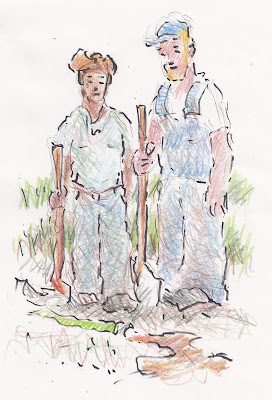In the meantime, Pete the Welshman had married Dora the Artist sister of Elisabetta and they invited me to visit them in Switzerland.
At the time I was pretty furry--with a full beard and longish hair--sort of a hippy-looking chap--so I expected some sort of border problems crossing from Italy into Switzerland, but I told the customs officer I was visiting friends and mentioned their names and the village they had given me directions to--the officer waved me and my bike through and wished me a pleasant stay in Switzerland.
Pete was such a fun person to be around. Everything he did was done with maximum energy and enthusiasm--he was one of three young men I was lucky to meet in this lifetime: Nordic Norm in Lassen County California, Brian Callahan in Sonoma County, California and Pete at Il Poggio and now in Switzerland.
When I found the cottage of Dora and Pete, Pete immediately took off from whatever he was doing and took me for a spin by bicycle further into the mountains to see a religious community he thought I should visit.
Pete had a classic antique bicycle he had found and restored and was immensely proud of--especially its real leather covered narrow seat. I stripped my own funky German old-man-going-to-buy-bread bicycle of its bags and bottles and we took off.
It was a beautiful Swiss day and everything was fine.
Pete slalomed back and forth across the empty paved road with his usual joie de vivre which was so contagious--I started swooping with him.
There was a house at a sharp curve in the road and there was a cherry tree in its garden loaded with fruit hanging out over the road. I grabbed one cherry as I swooped under and around the tree.
"I thought pilgrims were not supposed to steal!" Pete cheerfully reprimanded me when we paused--and remember this is Switzerland. one of the very few places in this world where the inhabitants do not steal anything.
...


















